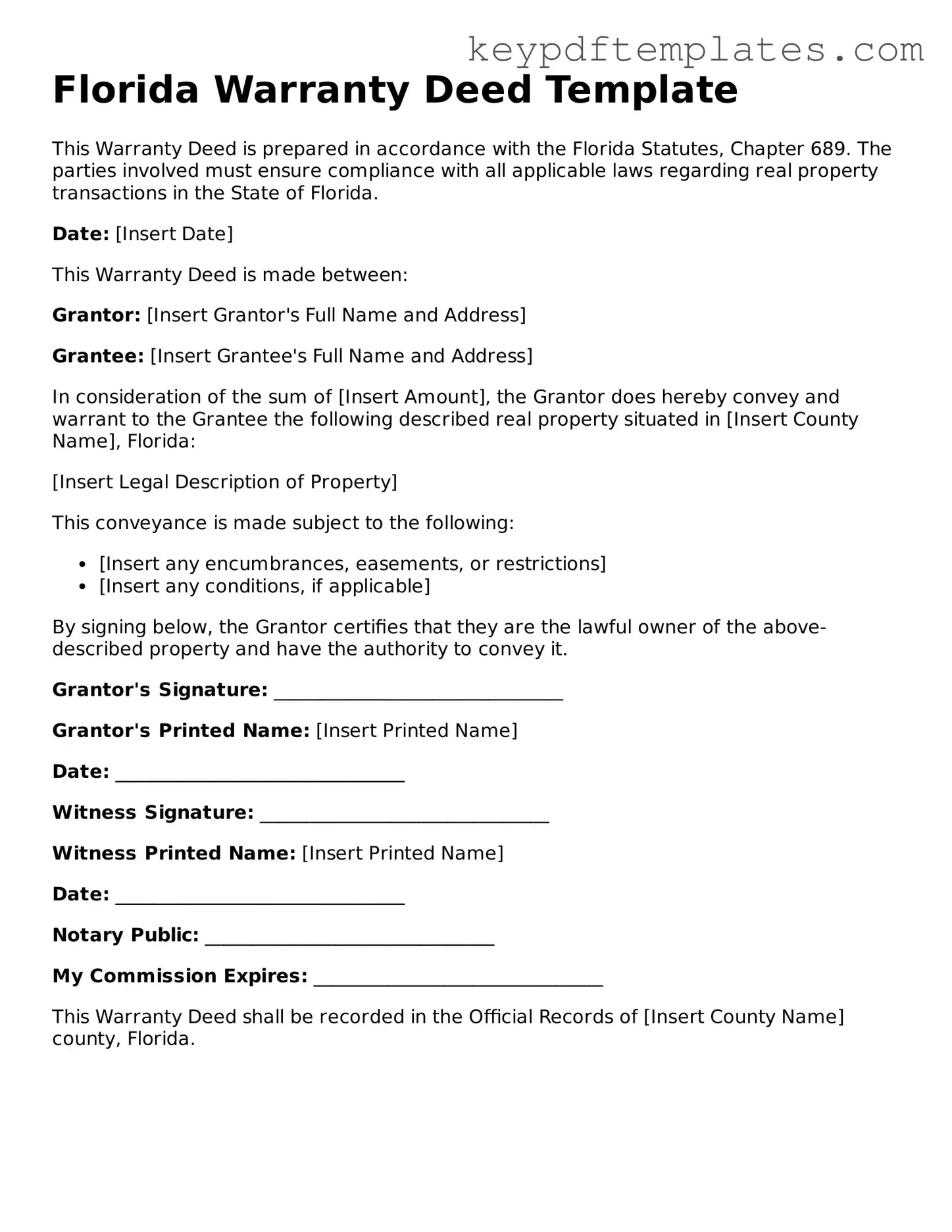Legal Deed Document for the State of Florida
A Florida Deed form is a legal document used to transfer ownership of real property from one party to another within the state of Florida. This form serves as a crucial tool in real estate transactions, ensuring that the transfer is documented and recognized by the state. Understanding the nuances of this form can help both buyers and sellers navigate the complexities of property ownership effectively.
Modify Document Online
